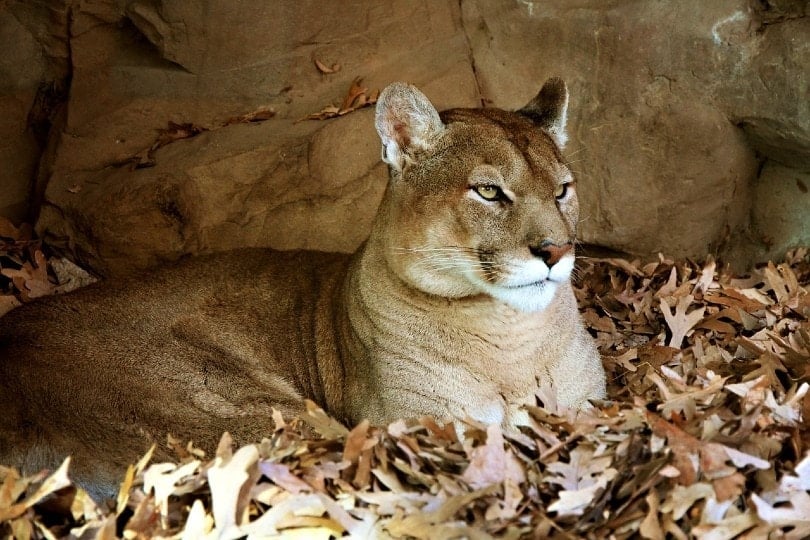Oregon is a state with a lot of natural beauty, untapped land, and rugged terrain. All of this contributes to a robust wildlife scene in the state that has been cherished for decades. One type of wildlife that is very prevalent in Oregon is wild cats. Wild cats are species of felines that have not been domesticated. These cats are large and adept hunters that live solitary lives in areas across Oregon.
Oregon is home to two native species of wild cats and the occasional host to one species of wandering wild cat. The brave, the lucky, and the outdoorsy will be able to spot these creatures as they are in the wild. You just have to know where and when to look.
Here are three types of wild cats you can find in Oregon.

The 3 Types of Wild Cats in Oregon
1. Cougar / Mountain Lion
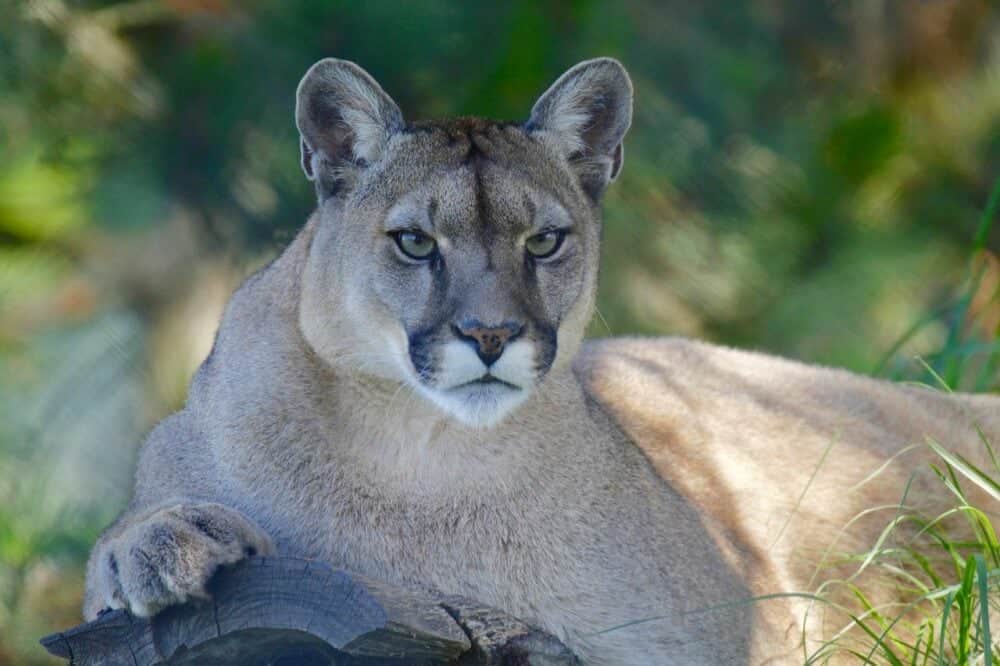
| Scientific name: | Felis concolor |
| Habitat: | Wooded areas, often remote, likes to spend time in hills, valleys, and mountains |
| Size: | 100-200 lbs. |
| Status: | Least concern |
Cougars, also known as mountain lions, are common predators in Oregon. The cougar is the largest cat in North America and the second largest cat in the entire Western Hemisphere. These felines can grow over 200 lbs., and the longest examples can reach lengths of nearly 8 ft. Cougars are second in size only to the fearsome jaguar, which stalks the jungles of South America. Despite their enormous size, cougars are actually more closely related to the common house cat than they are to other big cats.
Cougars are primarily identified by their size. They are far larger than any other cat in North America, even other wild cats. They can also be identified by their distinctive roar, which has become the audio mascot for various sports teams across North America. They often have light tan coats that remain short even in the winter months.
Cougars can be found in remote rural areas of Oregon and in the foothills of the Cascade Mountains. The largest concentrations of cougars are found in Western Oregon. Cougars can range for extremely long distances and are most often seen in winter when harsh temperatures force them out of the elevation and down into more populated areas. They should always be avoided when possible but spotting one could be fortuitous. Spotting a cougar is still rare.
They are sleek hunters, and they can pose risks to pets, livestock, and even humans caught in the wrong situation. Cougars are ambush hunters that like to lie in wait for unsuspecting prey. Pets and livestock usually have no chance if they are jumped on by a hungry cougar. They occasionally maul humans as well in remote areas.
Cougars are by far the largest wild cat in Oregon but seeing them is difficult. Cougars are solitary, live in remote areas, and can travel very long distances in a single week, making tracking them and getting a repeat sighting extremely rare. Despite their secretive nature, cougars are not endangered or even at risk. They are plentiful and have large populations within Oregon.
2. Bobcat
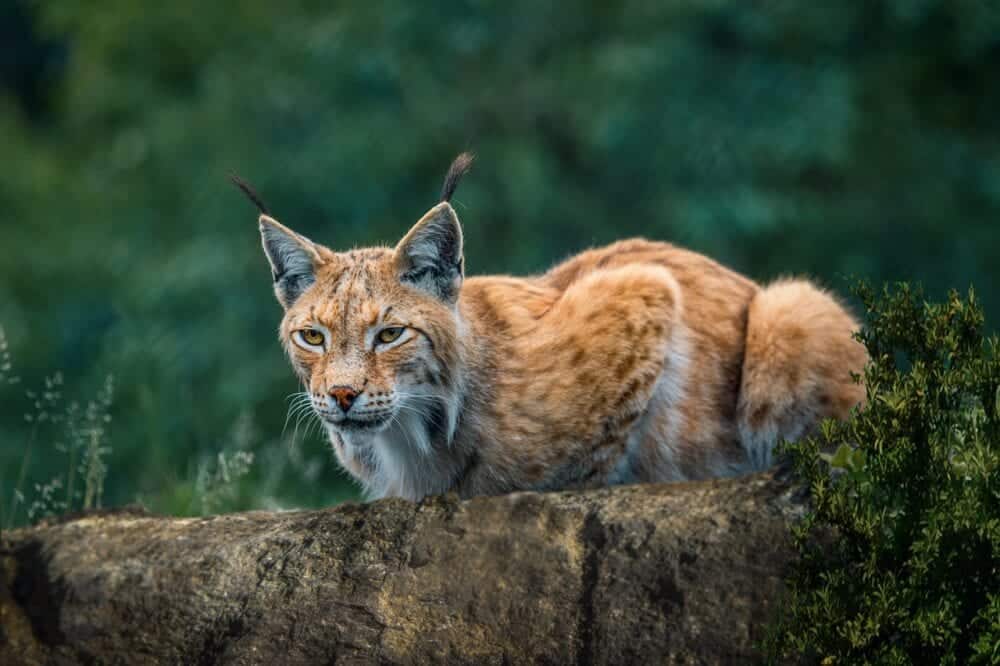
| Scientific name: | Lynx rufus |
| Habitat: | Temperate areas with sufficient brush for hunting |
| Size: | 20-40 lbs. |
| Status: | Least concern |
Bobcats are one of the most common species of wild cat in North America. They can be found as far north as Alaska and as far south as Florida. Bobcats are native to Oregon and can be found in every region of the state. Bobcats are just as likely to live in the middle elevations of the mountains as they are in a peaceful meadow near a suburban neighborhood. The only areas of Oregon that bobcats avoid are highly populated areas like city centers and very high elevations near the mountain peaks.
Due to their high population and prevalence, spotting a bobcat is fairly easy. They can often be seen hunting during the warmest parts of the day and will often stalk prey through people’s yards. Bobcats have adapted to have little fear of people in sparsely populated areas, and they can pose a danger to small pets and livestock such as chickens.
At first glance, bobcats look similar to house cats. They are the smallest species of wild cat in Oregon. A female bobcat will appear very similar to a stray house cat from a distance. The females are about half as large as the males. Male bobcats are large and stocky and can weigh as much as 40 lbs. Bobcats have short tufty tails, small, pointed ears, usually with black tips, and long legs with small paws. The small paws of the bobcat prevent them from comfortably inhabiting areas where snow is common. They cannot traverse snow as well as some other wild cats that are more adapted to extremely cold climates.
If you live in an area with moderate amounts of woods and low amounts of traffic, you are likely to spot a bobcat at some point. Bobcats will hang around bird feeders and hunt small birds and squirrels that are attracted to suburban areas. Keep an eye out, and it won’t be hard to spot these wild cats in their natural habitat throughout Oregon.
3. Canadian Lynx
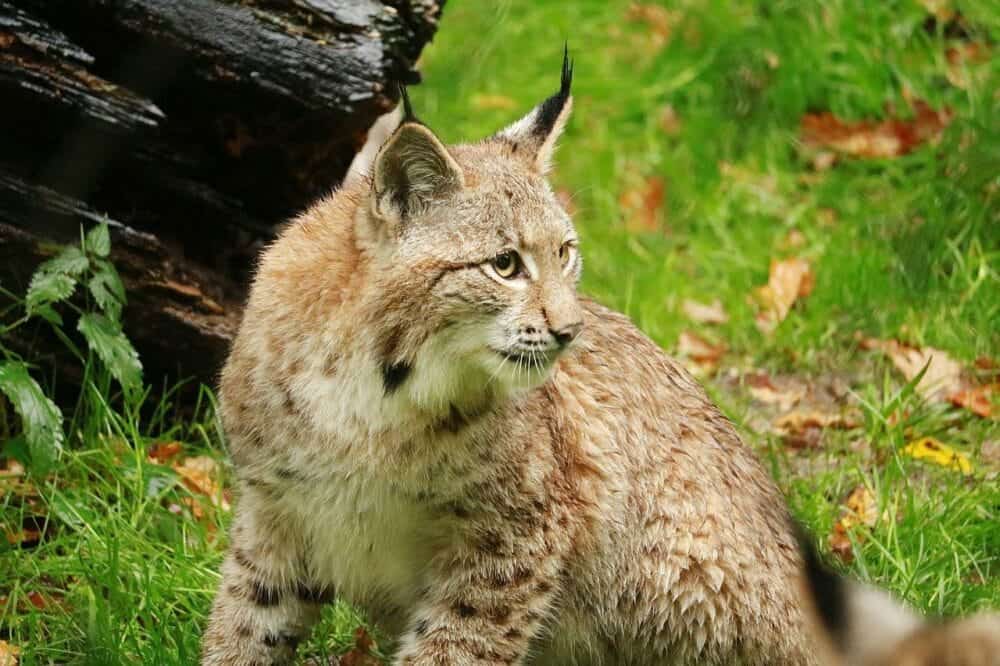
| Scientific name: | Lynx canadensis |
| Habitat: | High snowy elevations |
| Size: | 10-40 lbs. |
| Status: | Least concern |
The last wild cat that has been found in Oregon is the Canada Lynx. Canadian lynxes are very common in Canada and in border regions in the northernmost reaches of the United States. They have been very seldom spotted in Oregon, and they are not believed to be native to the state at this time. However, migration due to climate change, human development, and severe weather events have sometimes pushed fringe numbers of lynxes south from Canada and into the mountains of Oregon.
Canadian lynxes are larger than bobcats, have much larger paws made for traveling through deep snow, and prefer to live at high elevations where the air is cold, and the seasons are snowy. A Canada lynx can be identified by its long thick fur coat that has been prized by admirers and trappers for centuries. Canadian lynxes often look like shaggy bobcats with grayish-white fur in the winter and reddish-brown fur in the summer.
The primary diet of Canadian lynxes is snowshoe hares. You will not find any number of Canada lynxes without a sizable presence of snowshoe hares. For this reason, they are rarely found in Oregon, and when they are, it is considered an aberration.
However, despite the extreme unlikeliness of a sighting, it is still possible to catch a glimpse of these majestic wild cats in Oregon. If you live at high snowy elevations in the Cascade Mountains, there is a chance you can spot a Canada lynx on the off chance that they have wandered down the range from areas farther north. This is the rarest wild cat in all of Oregon, and seeing one is a fortunate prize.

Are There Wild House Cats?
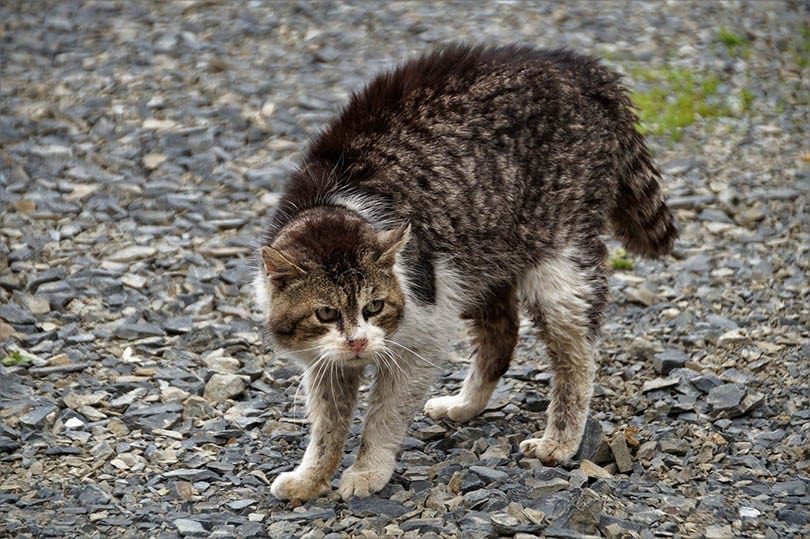
The common house cat can live in the wild and can be wild, but the species itself is not wild. The species name for a house cat is Felis catus which is classified as a domesticated species. Bobcats, cougars, and lynxes are considered wild species. The definition of a domesticated animal is “an animal, as the horse or cat, that has been tamed and kept by humans as a work animal, food source, or pet, especially a member of those species that have, through selective breeding, become notably different from their wild ancestors.” House cats fall into this category and are thus separate from the species of wild cats.
House cats can live their entire lives outside as wild or stray animals. You can see them outside. They can act very wild. But the behavior and living conditions of a house cat do not determine its status as a wild cat; its species does. You can add stray house cats to the list of cats you might see outside in Oregon on any given day, but they are not wild cats.

Conclusion
The most common wild cat in Oregon is the bobcat, followed closely by the fearsome cougar. Both of these animals can be found in large portions of Oregon. The Canada lynx occasionally makes an appearance when they wander down from Canada along the Cascade Mountains. You might also see stray cats milling about, but they are not considered wild. They are domesticated. There are very few species of wild cats in North America so seeing either of the two most common species in Oregon is a treat.
Featured Image Credit: PublicDomainPictures, Pixabay
